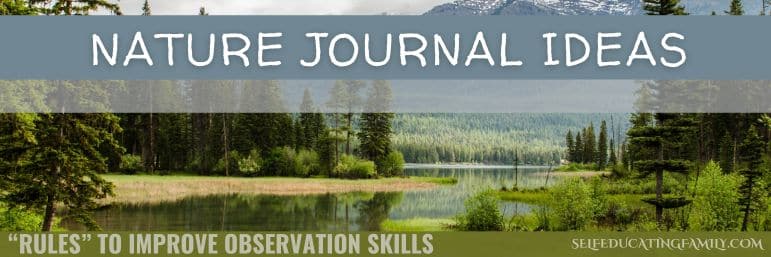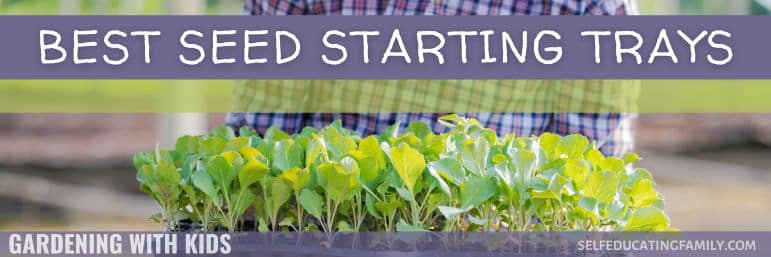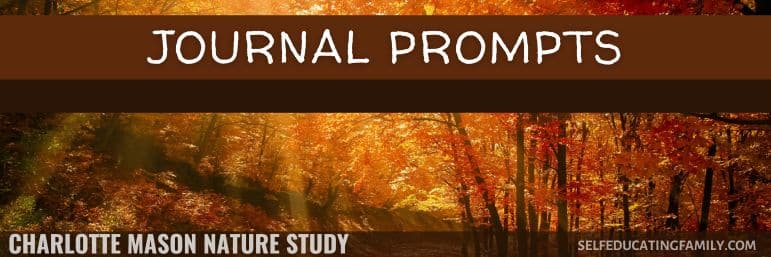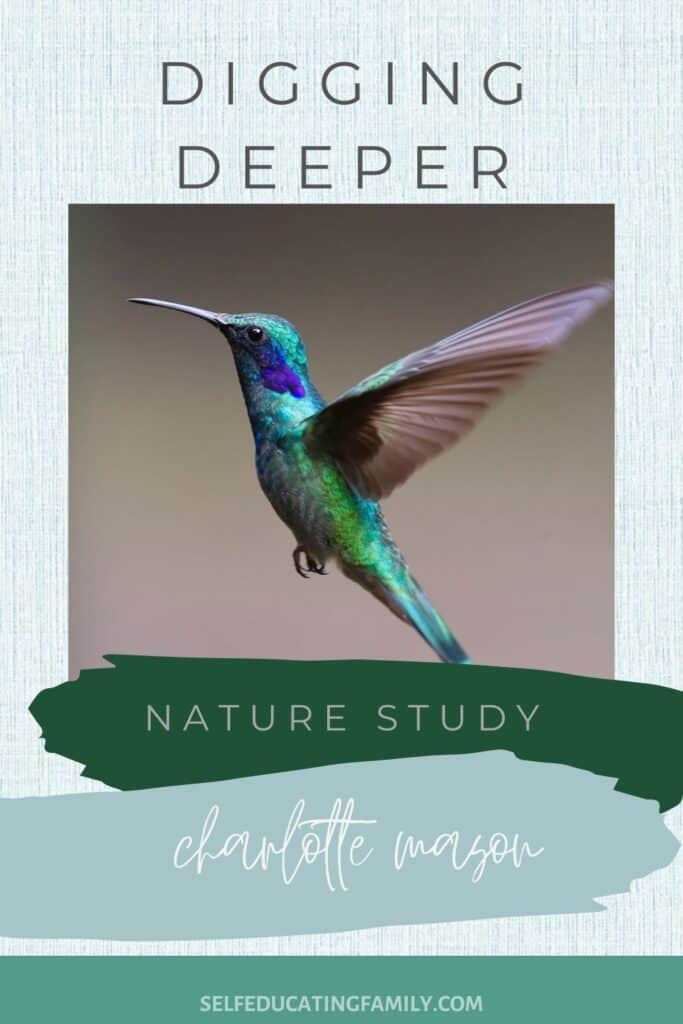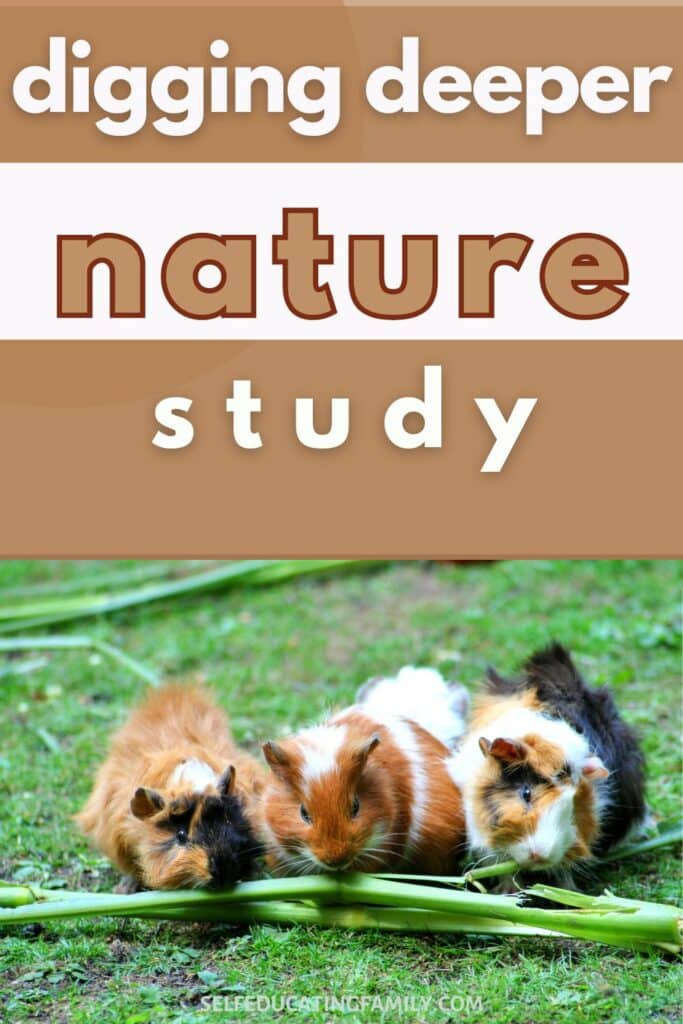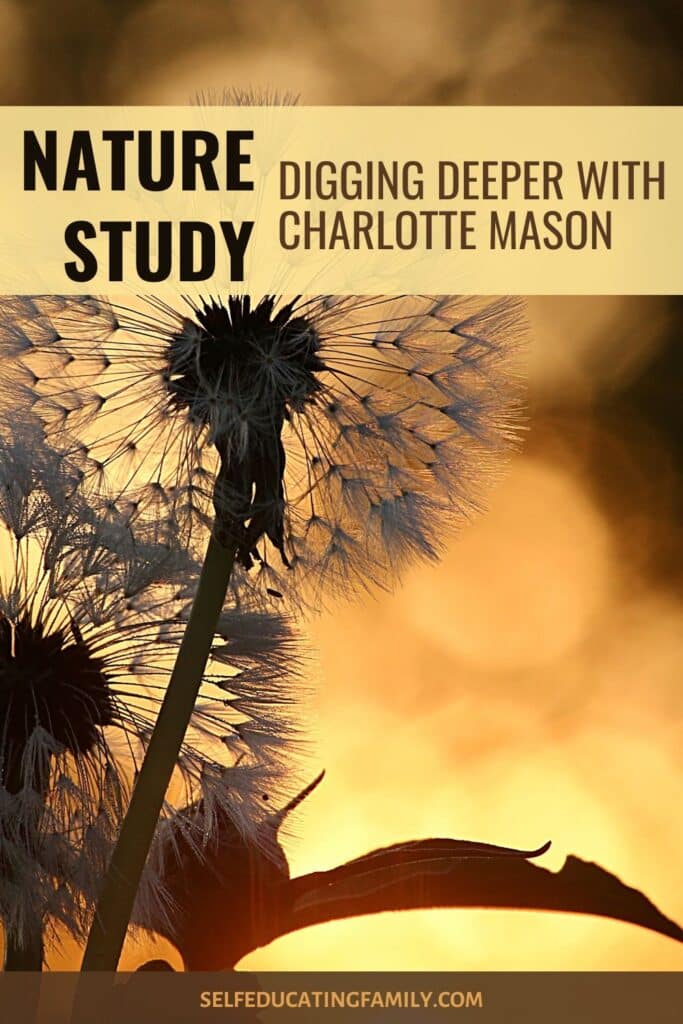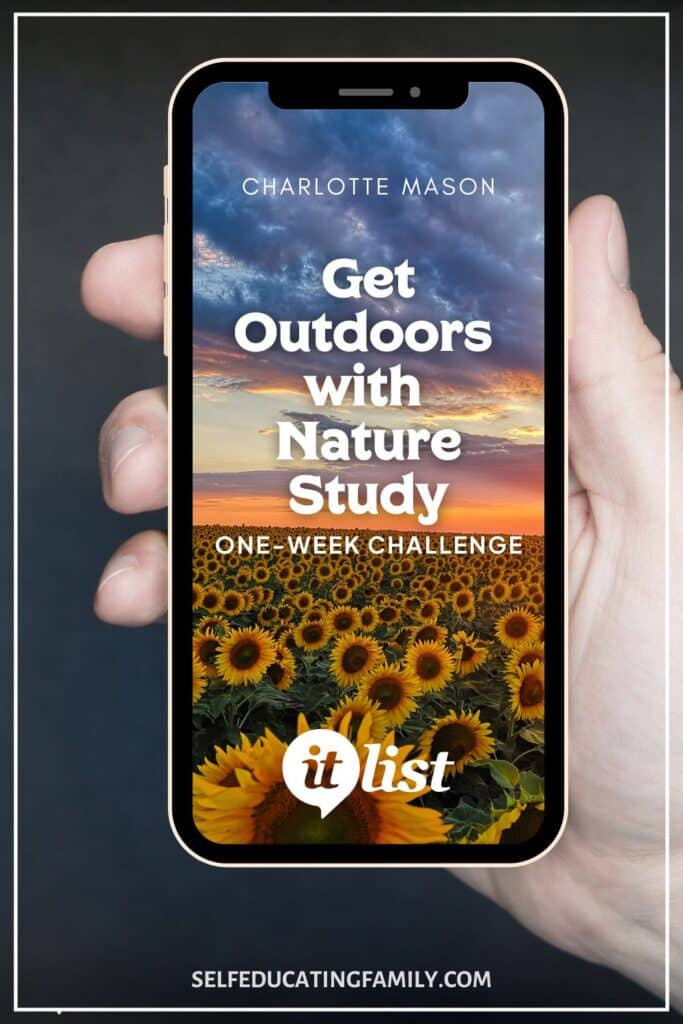What’s inside: Getting kids outside for nature study is a vital part of a Charlotte Mason (CM) homeschooling day. Let’s see how nature study can add to the feast you set for your child and specific ideas that CM suggested to help young minds thrive.
Charlotte Mason Nature Study
Is Charlotte Mason Nature Study very different from plain ordinary nature study? What aspects of nature study are specific to Charlotte Mason (CM) methods? This post will dig a bit deeper to help you take your nature study up a notch.
However, if you haven’t been practicing nature study as a “course of study,” you may want to review some nature study basics. If you need to brush up your habit of observation, then head over to our in-depth look at the habits for learning to see how nature study is one of the best ways to increase your habit of observation, specifically.
Disclosure: This post contains affiliate links, meaning that if you make a purchase after clicking through, SelfEducatingFamily will receive a small commission at no extra cost to you.
What does Charlotte Mason say about nature study?
Gentleness, consistency, and patience. These define the Charlotte Mason approach to nature study.
Charlotte Mason made numerous observations and suggestions on “the out-of-door life”, particularly in Home Education (Volume 1 of the Home Education Series).
She starts by examining what is best for the child and begins the discussion with children under 6.
So she’s talking about kids who are pre-school-aged. In her schools, formal schooling does not occur until after age 6. And before that, what do you do with the kiddos?
Outdoor life
Well, she suggests outdoors and then makes specifics for different situations – country kids, suburban kids, and city kids.
Never be within doors when you can rightly be without.
Charlotte Mason
How much time daily in the open air should the children have? And how is it possible to secure this for them? In this time of extraordinary pressure, educational and social, perhaps a mothers first duty to her children is to secure for them a quiet growing time, a full six years of passive receptive life, the waking part of it spent for the most part out in the fresh air.
– Vol. 1. p 43
I agree with what you are thinking – that’s really hard! Especially if you have preschoolers AND school-aged kids!
We may have to deal with that in another post.
For now, let’s pretend you just have littles.
Best Ideas from CM for Nature Study with Littles
Here, I’m going to highlight some ideas from her writings. These are my favorite CM ideas of what to do outdoors with the littles:
- Eating “al fresco”
- A day outing
- If you are from the suburbs or cities, plan on some loose free time upon arrival. Give them a chance to shake their fidgets out from getting there.
- “Sight Seeing”
- Mom trains the littles in observation through impromptu explorations.
- “By degrees the children will learn discriminatingly every feature of the landscapes with which they are familiar.” — Vol. 1 p. 47
- “Picture Painting”
- This is a game of staring at a landscape, closing your eyes, then describing in detail what’s there.
- CM warns that this can be straining, so don’t do it too often. Or wait until it’s requested. Remember, little kids learn through play and exploration. Their natural curiosity is vast.
- “It is, however, well worth while to give children the habit of getting a bit of landscape by heart in this way, because it is the effort of recalling and reproducing that is fatiguing; while the altogether pleasurable act of seeing, fully and in detail, is likely to be repeated unconsciously until it becomes a habit by the child who is required now and then to reproduce what he sees.”— Vol. 1 p. 49
- Focus on one category at a time over a semester. CM then goes on to detail possible categories of nature to study to focus on, for instance:
- Flowers
- Trees
- Seasons
- Living “creatures”
I highly recommend reading this section of the Home Series if you can.
- Read it on Ambleside online
- Read it on Gutenburg Press
Two tools
- Calendars
- Nature journals
Calendars are used to note the dates of things that happen in nature. For instance, “First Robin seen this year” on April 11, 2024.
I like using a 5-year memory book. And I’ve used it for more than 5 years. I think I’m not diligent enough! But it’s a fun tool. It has dated pages with spaces for undated years. So you can come back to the same date and can see what happened last year at that time.
Nature Journals are used to capture whatever else. Some people like to make lists in their journals, like “10 birds I’ve seen this Spring” or “Things found in the Pond”. Some people like to draw and write notes. There are some amazing journals out there, but I would like to point out that you don’t have to be Michelangelo to keep a journal. The nature journal police are not going to grade your journals.
The journals you see online (while beautiful and inspiring) are usually by artists or really artistic people. It’s ok to journal however you want. No comparisons!
Troubleshooting Issues
1: Over-complicating it
As I said about nature journals, don’t be a perfectionist. If you can’t draw anything now, but would like to – add some simple drawing lessons to your semester.
One year, my guys got very frustrated at nature journals because they didn’t have the skills to replicate what they saw. They ended up drawing a lot of sticks. It wasn’t our best year!
The year we added a camera to nature study, they really enjoyed it. The “pictures” in their journal came out much more like they wanted. But at the same time, we added “Drawing” to handicraft using the book Drawing on the Right Side of the Brain. Everyone got better at reproducing what they saw.
Be flexible, do what you can. Get out in nature and observe.
I hate to say it because it is overused, but try to keep it simple!
2: Seasons
How many times have I heard, “We can’t go outside today! It’s too [hot, cold, windy, snowy, etc. insert adjective here!]”
Here’s my advice: Get over it.
It’s just weather.
Dress appropriately, and carry water and appropriate emergency supplies. Enjoy the changing seasons.
3: Teens
Ok – so here I am straying from the littles.
Sometimes older kids resist nature study. For whatever reason.
You will need other ideas to keep it fresh. And you will need to find ways to get your kids to take responsibility for their learning. What interests them in this area? It’s an enormous topic, really. There’s got to be something they’d like to know or do.
Incidentally, a lot of the following great ideas are from WeirdUnsocializedHomeshoolers.
- The camera is a good option for this age.
- Have your teen “lead” a nature walk.
- See if they can volunteer at a zoo or sanctuary. One year, we helped with spring cleanup at the nature preserve.
- Choose a challenging conservation project for the semester like planting trees or building birding boxes.
- We went to a park once that had a “photo station” some kid had made as a community project. It was basically a wooden perch (like a tripod) to put an SLR camera on and take a picture of the lake. The project also had a local website to upload pictures of the lake and the birds on the lake where the photos were all taken from the same vantage point. The whole community enjoyed it.
- Plan and execute a weekend camping trip.
FAQ
Charlotte Mason advocating spend most time outdoors for children below the age of 6 and outdoors in the afternoons once the formal schooling was finished for the schooling-aged children. In her writings she said this was “best”. And then she would get practical and real – and suggest ways to increase the time outside when you are actually living day-to-day. Nature study was vital to this outdoor time. Observing nature and honing your observation skills builds your relationship to the wondrous natural world.
I like how Sonya Schafer describes CM nature study in 4 steps:
— Pick a focus
— Go out in nature
— Observe
— Record
So get out in nature!
It’s a great day to do some nature study! Go do it!
Related articles
Keep learning
- Inspirational Quotes for the Nature Walk | Self Educating Family
- Favorite Resources for Charlotte Mason Homeschooling: Nature Study and Science | A Humble Place
- How to incorporate more Nature Study | Blossom and Root
- Nature Study for Teens |Nature Study Homeschool
- 5 Charlotte Mason Inspired Reasons on “Why Nature Study?” | Wonder Filled Days
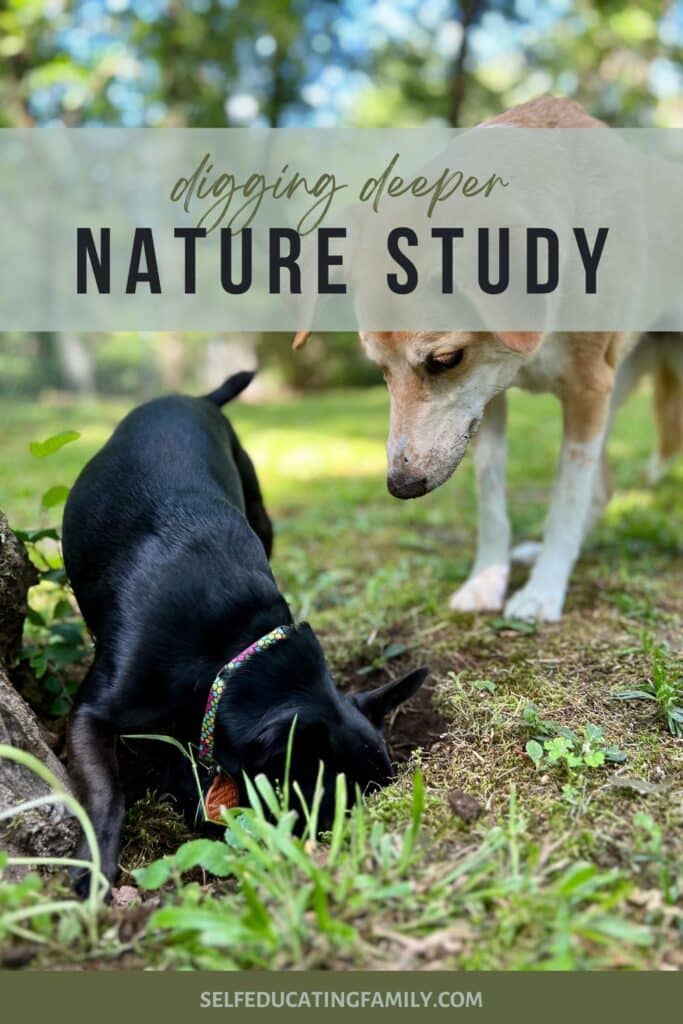
If you would like more detail on working with a nature journal, then try my One-Week Challenge: Get Outdoors with Nature Study.


